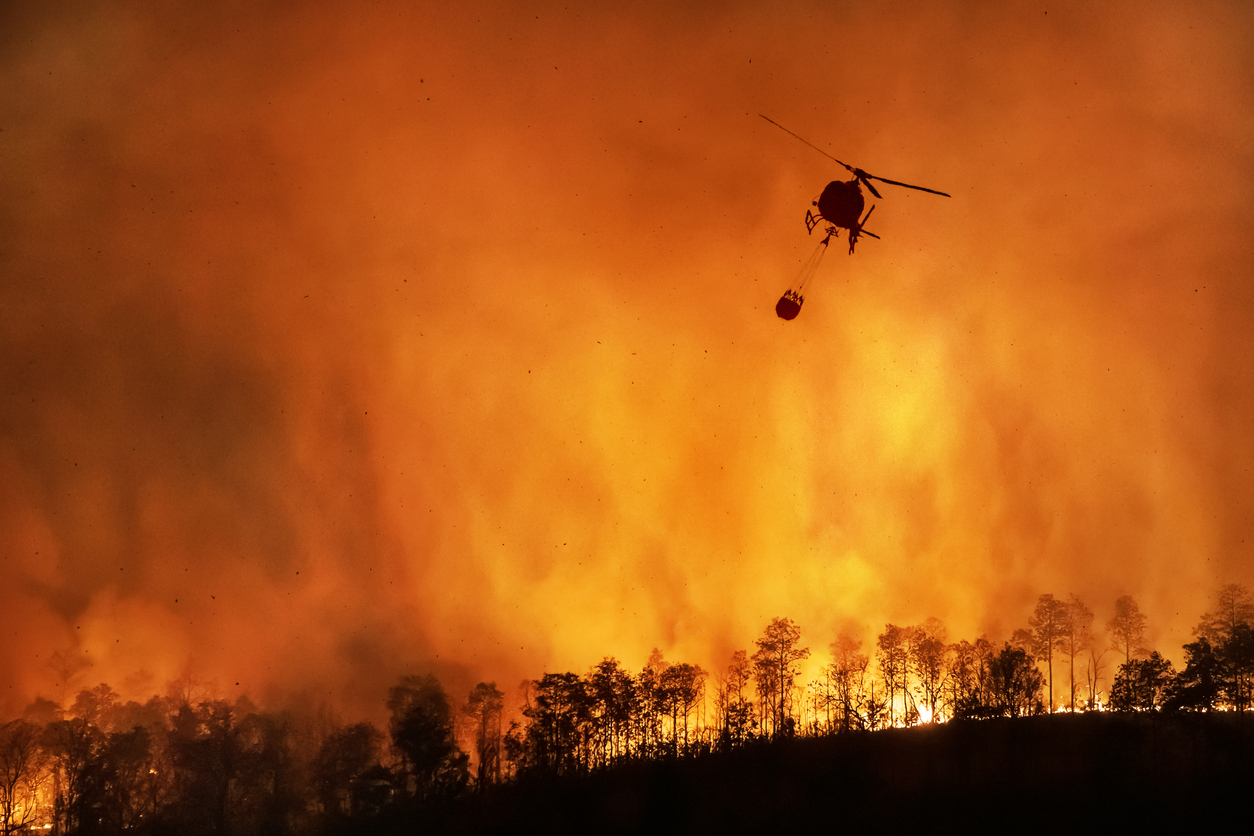With temperatures cooler, humidity higher and winds calmer, crews have made great progress in recent days, boosting containment to 95% on the nearly 67,500-acre fire, Cal Fire said in a Monday morning update.
Cal Fire reports activity on the Glass Fire is “limited” and says firefighting resources are being “demobilized,” according to a Sunday evening incident report. Fewer than 900 personnel were assigned to the incident as of then, down from well over 2,000 much of last week.
Limited evacuation orders and warnings remain in place for isolated areas within Napa and Sonoma counties, but the vast majority have been lifted, allowing residents to repopulate most of the region. Napa County is holding a virtual community recovery meeting at 4 p.m. Monday to provide residents with resources and information on how to safely return home after the fire.
The Glass Fire started early in the morning on Sept. 27 as separate incidents that quickly merged and exploded in size within 48 hours, swept east by very gusty winds. Starting near Calistoga, the Glass Fire spread east into the heart of the North Bay region known as Wine Country, prompting evacuations of Calistoga, the town of Angwin, neighborhoods on the eastern edge of Santa Rosa and other, unincorporated communities.
No deaths or injuries have been reported, but close to 650 homes were destroyed: 334 in Sonoma and 308 in Napa. Nearly 160 more were damaged across the two counties, according to Cal Fire’s Sonoma-Lake-Napa unit. Hundreds of commercial buildings, including renowned wineries and restaurants as well as outbuildings and other minor structures, were also consumed or badly damaged.
At over 1,550 total structures razed, the Glass Fire is the 10th-most destructive blaze in state history, according to Cal Fire.
Farther north, the Zogg Fire in Shasta and Tehama counties was 99% contained. Four of the deaths occurred in that fire.
Six of California’s 20 most destructive wildfires ever have sparked this year, all since mid-August. Four of them — the Glass Fire, the million-acre August Complex, the North Complex and the Creek Fire — are not yet 100% contained. Cal Fire says the LNU Lightning Complex and CZU Lightning Complex, which are No. 11 and No. 12 on that list, respectively, have gone final.
Still, those half-dozen other large blazes had no significant growth or were exhibiting minimal fire behavior, Cal Fire said.
“Progress across the board has been made, a testament to the extraordinary work of the men and women of Cal Fire and all the mutual aid that’s coming over across the rest of the country,” Gov. Gavin Newsom said during a briefing.
This year is by far California’s most intense wildfire season ever recorded in terms of land area burned. Cal Fire reported more than a week ago that dozens of major fires and hundreds of smaller ones have combined to torch 4 million acres (6,250 square miles). No other calendar year, since record-keeping began, has reached even 2 million acres.
At least 31 people have died from California’s wildfires this year, and more than 9,200 structures have been destroyed.
In a statewide summary Monday morning, Cal Fire said more than 12,600 firefighters continue to fight 14 major wildfire incidents burning in California. Six wildfires recently had the “major” distinction dropped, due to minimal growth over the past several days.
Cal Fire, the National Weather Service and Pacific Gas and Electric Co. are warning that fire weather conditions are expected to elevate once again by the middle of this week, as breezy north winds and high temperatures return to the foothills and the greater Bay Area.
PG&E said over the weekend that it could possibly cut power to an unspecified number of customers in those regions later this week as part of another public safety shutoff, due to “gusts at or above 50 mph” possible at higher elevations in the North Bay and northern Sierra Nevada areas.
What had been forecast earlier as a rainy system expected to pass through Northern California this past weekend ultimately materialized into nothing more than a drizzle concentrated mostly in the far northern reaches of the state.
It wasn’t close to enough precipitation to put a dent in California’s fire risk for 2020, a wildfire season that has boomed in the past two months due to critically dry vegetation and which likely won’t subside until widespread heavy rain passes through.
But the recent pattern shift did wonders for air quality. Smoke and polluted air essentially disappeared from the northern half of the state, according to the NWS and local air districts.
Climate change and wildfires
Wildfires have always been part of life in California. The past four years have brought some of the most destructive and deadliest wildfires in the state’s modern history.
Nearly 180 people have lost their lives since 2017. More than 41,000 structures have been destroyed and nearly 7 million acres have burned. That’s roughly the size of Massachusetts.
So far this year, at least 31 people have died, according to Cal Fire.
Meanwhile, this year’s August was the hottest on record in California. A rare series of lightning storms sparked a series of fires, including the August Complex that has burned nearly 1 million acres, making it by far the largest wildfire in California’s recorded history.
The 2017 wildfire season occurred during the second-hottest year on record in California and included a devastating string of fires in October that killed 44 people and destroyed nearly 9,000 buildings in Napa, Lake, Sonoma, Mendocino, Butte and Solano counties.
The following year was the most destructive and deadliest for wildfires in the state’s history. It included the Camp Fire, which destroyed the town of Paradise and killed 85 people, and the enormous Mendocino Complex.













